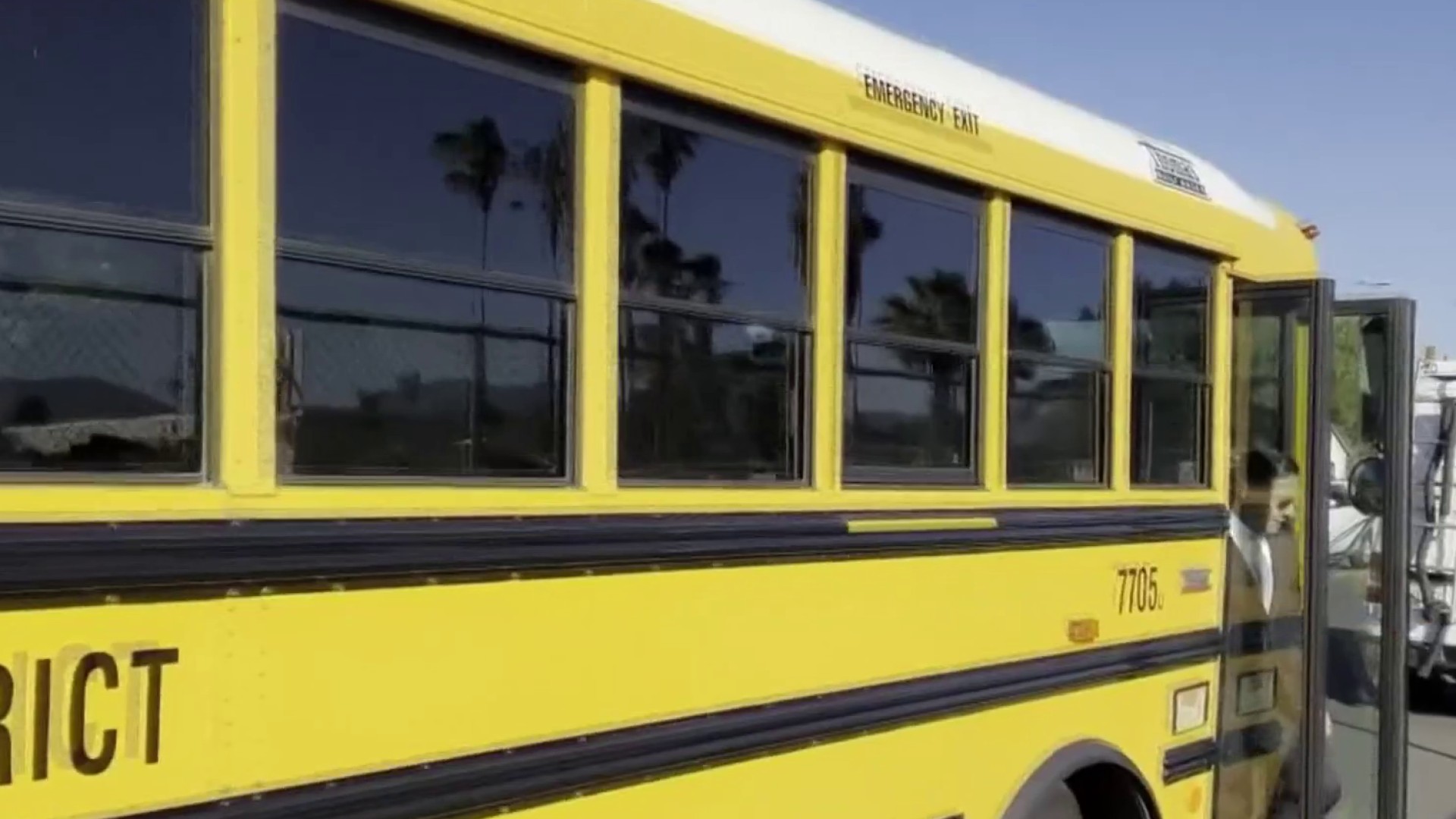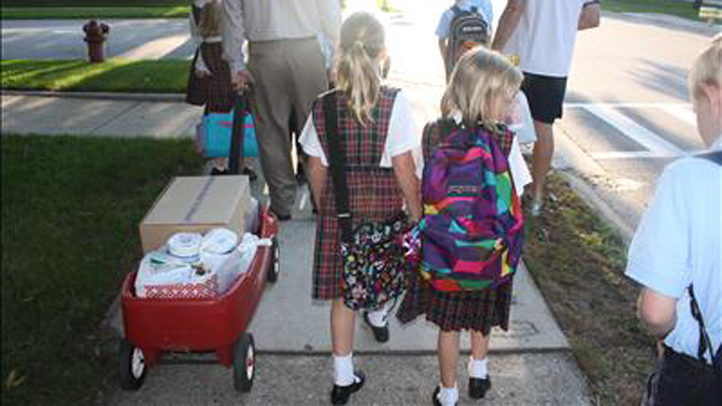As summer break ends, the hot weather continues. And in California, schools are not required to have air conditioning. Lolita Lopez reports for the NBC4 News on Aug. 14, 2023.
While the summer break is ending for many school kids and their parents, the summer heat has not.
The NBC4 I-Team found schools K through 12 across California are not required to have air conditioners or other cooling systems, and there is no regulated limit for how hot the indoor temperatures can get in schools.
Knowing what working cooling systems are in schools is important, but in California, it’s not an exact science.
“We don't know how many schools have air conditioning, if the air conditioning is functional. And we also don't know if schools can pay to operate them,” V. Kelly Turner/UCLA, Associate Professor of Urban Planning & Geography and UCLA Luskin Center for Innovation, Associate Director, said.
Get top local stories in Southern California delivered to you every morning. Sign up for NBC LA's News Headlines newsletter.
She says there is no legislation in the state to track cooling systems in schools.
“When schools do reporting, they have annual reporting that they have to do, that's not included in that,” Turner said.
Updating that reporting system is one of the recommendations in Turner and fellow researchers’ report, “Protecting Californians With Heat-Resilient Schools,” which calls for better ways to address heat in schools.
Researchers also explain there is no state standard for how hot temperatures can get inside classrooms. And then, there are what are often called “concrete jungles” – the playgrounds at many schools in Southern California.
Prinicpal Aleta Williams says part of her preparations before she welcomes more than 900 students to 107th Street Elementary School in South Los Angeles is making sure her students are in cool and comfortable environments.
She considers herself lucky that her school has an air conditioner in every classroom.
"I can't imagine functioning without them,” Williams said.
And while there are some trees outdoors, the play structures, grassy field and basketball courts at 107th Street Elementary are not under any covered structures.
“This is where they're actively spending time. They're moving their bodies. They're playing hopscotch, baseball. And so when I point my meter now, it's 119.1 degrees,” Robin Mark said, as she demonstrated the temperature of the asphalt in the play yard using a heat detection device.
Mark is with the non-profit group Trust For Public Land and is helping transform schools like 107th Street Elementary.
The expected three-year project here, funded with nearly three million dollars in grant money, is getting underway and is the second school in Los Angeles receiving assistance from TPL.
In July, Governor Gavin Newsom announced that CalFire is providing $47-million dollars in grants to help schools go from asphalt to green space.
“We think about green schoolyards as sort of the secret weapon to addressing issues of climate change,” Mark said. “And that's what we're going to do with the students at 107th, is we're going to ask them what they want out of their schoolyard, and we're going to use that urban grant money to create that with them,” she added.
Mark also believes there should be state standards to enhance heat resiliency at schools.
“We're actually working right now at the state level to try to carve out a billion dollars from the $14 billion school bond to specifically call out green schoolyards, because we view this work not as a nice to have or a landscaping discussion. This is really about infrastructure,” she said.
In the meantime, with the forecast of more 90 degree plus days during the first week of school, Principal Williams is making sure her plans are in place –outdoors and indoors.
“We're fortunate to have a district that responds pretty quickly whenever we have any type of air conditioning issue. We also have alternative spaces where we can take kiddos for a while, while we wait for someone to come and fix the AC,” she said.
The NBC4 I-Team asked the California Department of Education about their current guidelines for responding to extreme temperatures. They said, in part, they have created a list of resources from the American Red Cross, the Centers for Disease Control and others to help schools in decision making for excessive heat.
When asked if the state is planning to create a method to track heat intervention and cooling systems in school, a spokesperson tells the I-Team:
“We are not aware of such a system. The School Emergency Reporting System (SERS) tracks reports from school districts, independent charter schools, and county offices of education regarding natural disasters impacts to schools. It should be noted that reporting in this system is not mandatory.”
The state’s recent Extreme Heat Action plan says it will “explore implementation of indoor and outdoor heat exposure rules for schools.” No time line yet set.
The Los Angeles Unified School District tells the I-Team that all district schools have heating, ventilation and air conditioning systems. They say they also have portable air conditioning units, box fans and other devices to deploy to schools who request additional ventilation and cooling support.
In anticipation of oncoming hot temperatures they say, they have increased these units from 1700 to more than 2800.



